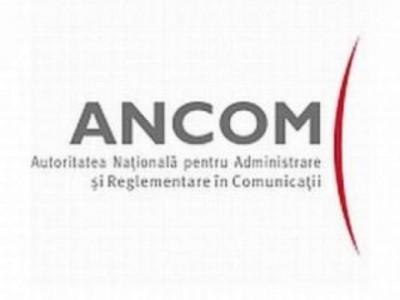ANCOMor National Authority for Communications Administration and Regulation, published today a press release in which he claims that he will propose lowering the telephone interconnection rates. According to the proposal that ANCOM is going to make, the maximum tariff for terminating calls to fixed points should decrease from 0,67 eurocents/minute to 0,15 eurocents/minute, and the maximum tariff for terminating calls to mobile points from 3,07 eurocents at 0,86 eurocents/minute.
The tariffs will become mandatory for mobile or landline operators as soon as the project's public discussion period ends, and from January 1, 2014, we may pay less for calls made from a landline or mobile phone. You can find details in the press release below.
ANCOM proposes to lower telephone interconnection rates
29.08.2013
The National Authority for Communications Administration and Regulation (ANCOM) today published for public consultation the maximum tariffs proposed for interconnection services in order to terminate telephone calls to fixed and mobile points, determined on the basis of cost calculation models. The authority proposes that from January 1, 2014, the maximum rate for terminating calls to fixed points should decrease from 0,67 eurocents/minute to 0,15 eurocents/minute, and the maximum rate for terminating calls to mobile points from 3,07 eurocents to 0,86 euro cents/minute.The maximum tariffs will become mandatory for all network providers in Romania, identified with significant power in the call termination markets to fixed and mobile points in Romania: 51 fixed network providers and 6 mobile network providers. As before, termination rates are not differentiated according to the technology used (eg 2G or 3G, PSTN or IP), the time slot in which the calls are made or their origin (fixed points, mobile points, networks national or international)."Interconnection tariffs remain the key to competition in telecom. On the termination market, each operator has a natural monopoly and that is why we need to regulate these rates, and the market data proves that the levels established by ANCOM in the last 10 years have stimulated competition, innovation and investments in the Romanian communications market. Under the pressure of competition, the average rates for calls decreased 7 times, and the consumption increased exponentially", declares Cătălin Marinescu, president of ANCOM.The competition has led to ever lower rates - currently Romanian consumers pay one of the lowest average rates in the European Union - 1,9 euro cents/minute - but it has also stimulated communications operators to make massive investments in the development of increasingly effective in providing new services, such as broadband internet. In addition, anticipating the future developments of the Romanian communications market, mobile communications network providers substantially increased their radio frequency portfolios last year. For their part, the providers of fixed communication networks have invested in high-performance networks, capable of offering customers Internet access speeds, at the level of those established by the European Union in the Digital Agenda.The termination rate represents the price paid on the wholesale market by a telephone service provider to the operator in whose network the calls made by its own users are terminated. Since this price is found in the rate charged to the end user who initiates the call, the practice of excessive termination rates in relation to the costs of efficient service provision can harm competition in the telephony market and distort the consumer behavior of users.That is why, in order to obtain the correct values of the termination rates, ANCOM calculated the effective costs of providing the services, using working assumptions in accordance with the Romanian legislation, the information transmitted by the network providers, as well as the best modeling practices from the level of the European Union, the models having already been publicly consulted during the fourth quarter of 2012."I am convinced that these measures will give a new breath to competition and will thus stimulate the development of more and more performing networks, used more and more intensively by more and more users, for more and more diversified services", the president of ANCOM also pointed out.The measures subject to public consultation also provide for new tariff ceilings for other regulated electronic communications services, namely national call transit services, auxiliary interconnection services offered by all communication network providers, terminal segment leased line services and support backhaul services Ethernet, provided by the Romtelecom company.The documents can be consulted on the ANCOM website here, the interested persons being invited to formulate and send observations and proposals until the date of 30.09.2013, at the address of ANCOM's headquarters in Str. Delea Noua no. 2, sector 3, Bucharest, or directly at the ANCOM registry. Observations and recommendations can also be sent by fax to the number +40.372.845.404 or by e-mail to the address consultare@ancom.org.ro.As a result of the period of public consultation and analysis of the observations and information received, according to the rules of the European regulatory framework in the field and Romanian legislation, possible adjustments to the proposed tariffs may take place. Also, ANCOM is to notify the European Commission and the national regulatory authorities of the other member states of the European Union of the set of proposed measures, together with the reasons underlying these measures. The European Commission and the other regulatory authorities will be able to send ANCOM comments and observations within one month from the notification date, which ANCOM will have to take into account to the highest degree. The entry into force of the measures is expected for January 1, 2014.

















